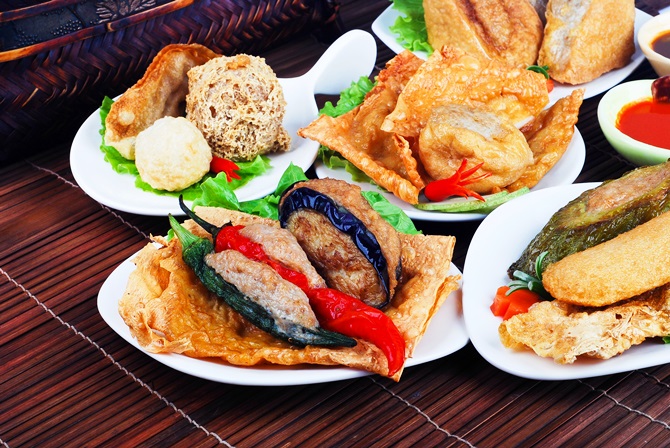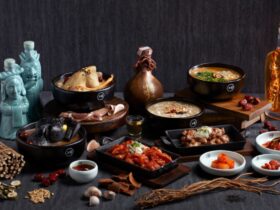Did you know Lee Kuan Yew is a Hakka? Here are some dishes from this dialect group that you never knew about!
The Hakka cuisine originated from the south-eastern Chinese provinces of Guangdong, Fujian, Jiangxi and Guangxi. There are many restaurants across South East Asia specializing in Hakka cuisine, particularly in Malaysia, Indonesia and Hong Kong. Hakka cuisine rose to prominence recently when it was inducted into the Hong Kong Inventory of Intangible Cultural Heritage just last year (2014).
Yong Tau Foo
Yes, this favourite dish is a Hakka dish! Yong Tau Foo consists of tofu filled with a ground meat mixture of fish paste. There are many variations of the Yong Tau Foo, such as a vegetable or mushroom stuff with ground meat. This versatile dish can be eaten either dry with an accompanying sauce or as a soup dish. The traditional Hakka dish consists of tofu cubes stuffed with minced meat and herbs, then fried to a golden brown. Some chefs experiment with the tofu to include eggplants, shiitake mushrooms and bitter melon.
Beef Meatball Soup
While beef meatball noodles originated from Teochew, it was the Hakka who decided to turn it into a soup dish. Beef meatball soup is a simple dish – it is a clear broth with lettuce and beef meatballs. In some versions, the broth is seasoned or salted to the chef’s preferences. Recent variations include adding wantons and fish cakes.
Duck stuffed with Glutinous Rice
For this dish, the duck has to be marinated, fried then stuffed with different ingredients. It is important that the duck bones are removed from the whole duck with the shape of the bird maintained. The cavities are then filled with seasoned glutinous rice and dried shrimps. Most chefs now add died scallops, Chinese ham and gingko nuts, to add to a list of eight ingredients. It is better known as the 8 Treasures Duck in restaurants.
Kou Rou
There are two variations of this traditional dish. The more common one consists of sliced pork with preserved mustard vegetables. The thick slices of pork belly are layered with preserved mustard vegetables then cooked and served in a dark soy sauce with light sugar. The other version is to cook it with yam or taro. The pork belly will be shallow-fried with the tam to a brown hue before being steamed with five-spice powder and yellow rice wine.
By Nicole Lee
ADVERTISEMENTS














4 Comments